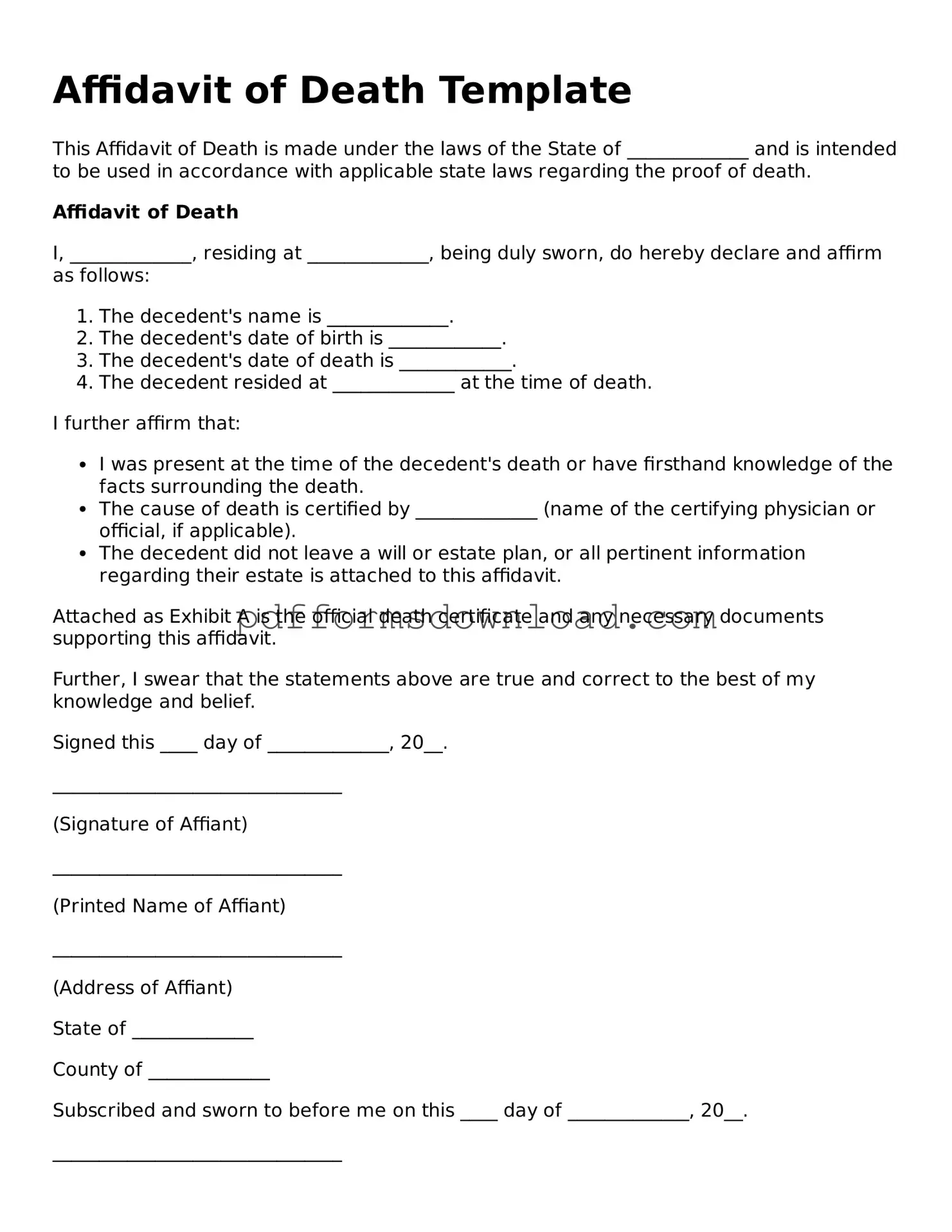Official Affidavit of Death Document
An Affidavit of Death form is a legal document used to officially declare that an individual has passed away. This form can be essential for settling estates, transferring property, or managing financial accounts after a person's death. To ensure you handle this process correctly, consider filling out the form by clicking the button below.
Make This Document Now
